A story as old as time, like Shakespeare's "To be or not to be?" This is, probably, one of the most remarkable quotes in classical literature. How many times in situations related to the collision avoidance, have we asked ourselves which actions are best?
If the situation arises in an open area when two vessels meet in the middle of the ocean, the choice is obvious. Black and white, to follow the COLREGs or not to follow. Clearly - only the COLREGs.
But here we are in the North Sea, the Baltic Sea or Southeast Asia: traffic, limited space, stick to passage plan, bad weather, fishermen, engaged in fishing, yachts, anchorages. Often, the "two-mile" rule is no longer working, we fall into the extensive gray sector of rule 2 of the COLREG and begin to ask ourselves many controversial questions, analyze the situation and make decisions.
Rule 2: Responsibility
(b) In construing and complying with these Rules due regard shall be had to all dangers of navigation and collision and to any special circumstances, including the limitations of the vessels involved, which may make a departure from these Rules necessary to avoid immediate danger.
Nothing exonerates the responsibility for non-compliance with the COLREGs, but may make a departure if the situation requires ... A question arises: where is the margin?
Rules shall be maintained as much as possible, no matter how much sea room and traffic is around. If no one follows the rules, it is almost impossible to predict the situation. At the end of the day, we cannot call all 20 ships within a 12-mile radius on VHF and find out what are their intentions.
Statistics is always helpful when one tries to understand the importance of a safety-related subject. According to EMSA (European Maritime Safety Agency) Annual Overview of Marine Casualties and Incidents 2017, collisions are the third in the total number of incidents and second in the number of very serious incidents during 2011-2016.

The combination of contact (18%), collision (16%) and grounding/stranding (15.6%) shows that navigational casualties represent 50% of all casualties with ships.
According to EMSA, a very serious marine casualty means a marine casualty involving the total loss of the ship or a death or severe damage to the environment.
In 60.5% of cases the cause of accidents was the human factor. Which is quite natural. As long as the helm is in human's hands, which regardless of technical means has the final word in decision-making the faults will be laid upon the operators (seafarers in our case). Transfer the collision avoidance task to the artificial intelligence - there will be more accidents, but the percentage of the human factor will be lower on the graph.

As expected about half of the collisions occur on the way to ports and areas with busy traffic. But what is surprising is that statistics show that in more than half of the cases, when the action had been taken it was already too late to do anything. Very often vessel turn to the side of the overtaking vessel with the subsequent collision.
Recently, I have come across two remarkable publications on the weak points in the bridge watchkeeping organization that should be taken into account in order to avoid a collision: the "Bridge watchkeeping and collision avoidance" by Japan P & I club and "The art of avoiding collisions" by the Nautical Institute.
Summarizing personal experience and the above publications, it is possible to single out the main aspects to which attention should be paid.
Situation visual assessment

The most important tool for assessing the risk of a collision is the both navigator's and look-out's eye-sight. And before taking any action, either to change course or speed, you have to ensure that you are fully aware of the situation around the vessel.
That exactly why one of the COLREGs parts refers to vessels, being in sight of each other. Neither on the radar, nor on the AIS or electronic chart, but exactly in sight.
Knowledge of lights, shapes, and daymarks according to COLREGs and IALA Buoyage System is not just a necessity, but something without which you shouldn't be the bridge as a part of navigational watch.
ARPA and AIS as watchkeeping aids

It is important to be able to use all the available equipment, and even more important to know its errors and limitations.
Rule 5: Look-out
The recommended priorities for the assessment of the risk of collision are: visually -> radar -> AIS.
AIS (Automatic Identification System) is useful for instant identification and assessment of vessel parameters. Also, in waves and heavy rain - to detect small ships, which may not be visible on the radar.
However, AIS has two main drawbacks:
1) Information received is formed on another ship and may be initially incorrect.
2) The closest point approach (CPA) is calculated on the basis of a short-term assessment of the information, and in bad weather or if the course and speed of both vessels fluctuate the CPA value will be unstable, with an error of, for example, 0.5-1 miles.
ARPA (Automatic Radar Plotting Aid) is the primary mean of preliminary collision hazard assessment, especially when the vessel is not within sight. Despite the fact that in the literature it is recommended to assess the risk of collision, first of all, by the visual compass bearing, in practice, in the presence of intensive traffic, especially at night, it is quite difficult to identify and track all the targets only visually.
The time delay in evaluating the parameters of a target is both an advantage and a disadvantage of ARPA. On the one hand, we can not immediately determine the exact value of CPA and other parameters. On the other hand, after 1.5 - 3 minutes, we get stable averaged values.
If we also can observe visually the shape and/or lights of the vessel, do not forget to establish a correspondence between the target on the radar and the target in the bridge window! It often happens that another vessel has already begun to maneuver, and visually it is perfectly visible, but neither AIS nor radar reflect the maneuver for a while.
Another useful property of the radar is the ability to display relative and true vectors and tails.
Trails (traces behind the echo-signal) are convenient because they indicate the movement of the target without the need to acquire it. However, in rough weather of the tail have to be reduced or removed completely because of the considerable noise on the radar screen.
True vectors and tails will show the movement of the ships relative to the ground. But it should be remembered that the true parameters are calculated using own vessel's course and speed, and if the latter is incorrect, then the courses and the speeds of the targets will be incorrect as well.
Relative vectors and tails depend only on the target's movement on the radar screen and show how other targets will pass relative to us, provided that we do not maneuver. Therefore, it allows you to get a visual picture of dangerous and non-dangerous targets when avoiding collision with several ships in the scene.
A convenient combination may be the choice of relative vectors and true trails. In this case, true trails can show which targets are moving, and which are not. And having acquired moving targets, - relative vectors will indicate if the risk of collision exists.
One of the functions that appeared on ARPA and ECDIS recently is the Target Association. In fact, this is the combination of AIS and ARPA data. It is important to know in this case which data is selected as a priority. And, preferably, choose ARPA.
Do not completely rely on the CPA. The compass bearing, visual or radar, remains the most reliable mean of determining the risk of collision. Also, it is necessary to take into account the geometric dimensions of the vessel and the location of the antenna. The distance from the antenna to the bow or stern of the vessel often reaches 0.1 of a nautical mile. That, respectively, is reflected in the CPA. If a vessel crosses the bow with a CPA of 0.1-0.2 nm, then, in reality, it is a collision.
Therefore, to determine the safe CPA, besides the minimum one set by captain in the Master's Standing Orders or Night Order Book, we shall consider the size and maneuverability of the vessel (turn radius, speed change limits and stopping distance), the distance to the nearest navigational hazard and convergence speed with them. For instance, when two ships on the reciprocal course have the speed of 20 knots, their speed of convergence is respectively 40 knots, a range of six miles between them will be covered in less than 10 minutes. In addition, you should always try to leave some reserve in case something goes wrong.
Why in the open sea do we try to keep at least 1 nautical mile CPA, and on the approaches to the port this distance is less? Because often in the open sea the navigator keeps watch on the bridge alone, the engine room is in the automatic mode and the reaction time in case of malfunction is longer. However, during the approach to the port, the watch personnel in the engine room and on the bridge is doubled and everyone is ready for maneuvers.
Maneuvering

A heading alteration maneuver is usually preferred, as it can be easily visually observed from another vessel. However, in constrained waters, or when, for example, we have an overtaking and crossing vessels on the starboard side, the speed maneuver may be the best way out of the situation.
The telegraph is on the bridge in order to work with it. And if the situation (and the technical capabilities of the ship) require to do so, it is necessary to put the engine into the maneuvering mode in advance in order to be able to alter the speed.
Rule 8: Action to avoid collision
(b) Any alteration of course and/or speed to avoid collision shall, if the circumstances of the case admit, be large enough to be readily apparent to another vessel observing visually or by radar; a succession of small alterations of course and/or speed should be avoided.
Use of VHF for collision avoidance

The emergence of AIS made identification of other vessels a simple task. Now it is enough to call another ship by name. You do not need coordinates, speed, course, or just screaming on VHF: "Vessel ahead of me please reply on channel 16!".
However, there is such a thing as VHF-assisted collisions. Many renown publications strongly recommend first of all to follow the rules and not to use VHF for collision avoidance. This is also related to the language barrier and problems of vessel identification. So, for example, you'll never know for sure that you are answered exactly from the ship that you called. And, oddly enough, there are many examples.
VHF is often used in pilotage, but in this case, pilots warn each other about the actions associated with maneuvering in constrained conditions and, as a rule, in advance.
Mindset

Finally, good safety culture is a key to effective collision avoidance. When making decisions, give priority to the rules. Keep the situation under control: keep proper look-out, check equipment. Do not be afraid to look again at COLREGs in order to refresh the nuances in memory. This does not in any way indicate illiteracy, but on the contrary.
"The art of the sailor is to leave nothing to chance." - Annie Van De Wiele.
It is never too late to learn and improve your skills, especially in the maritime industry.


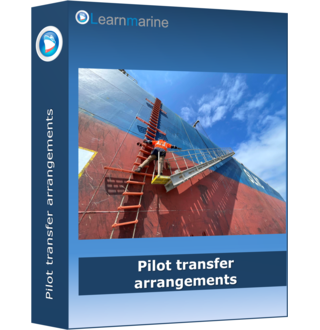
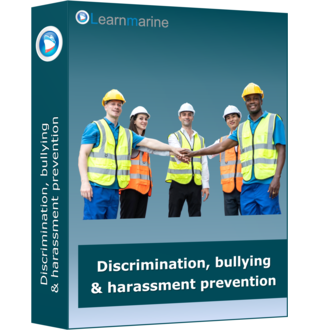
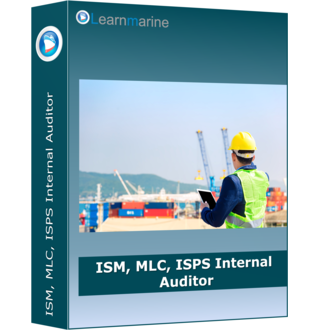


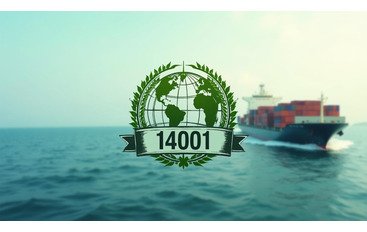
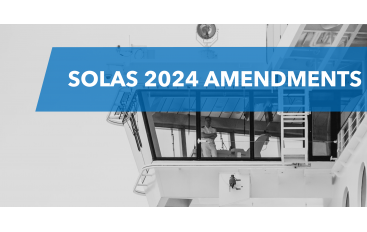
Comments